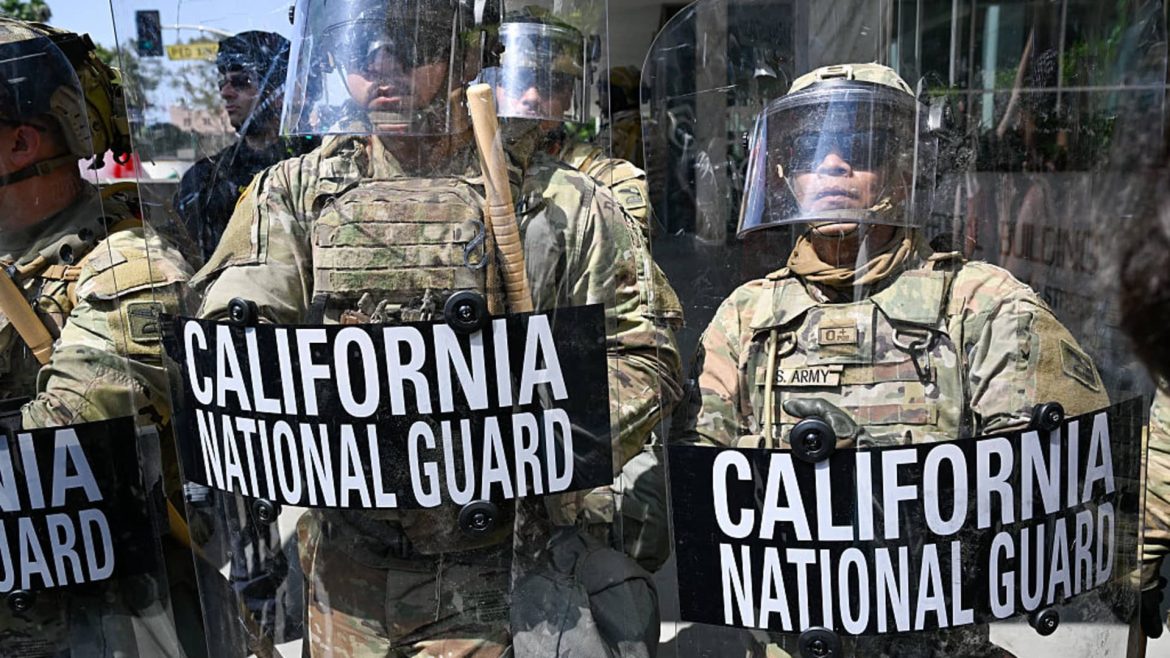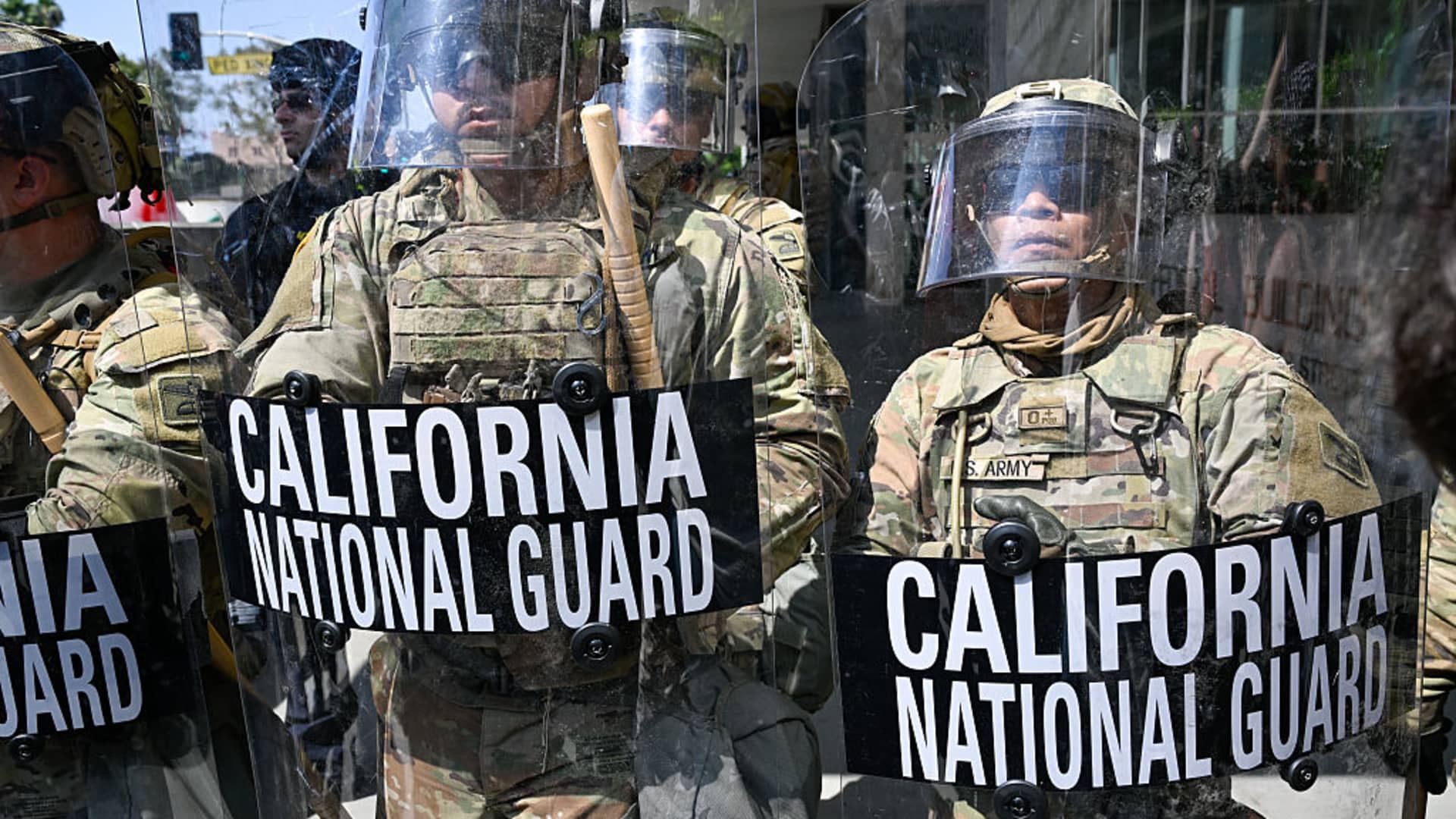Legal Clash Over Control of California National Guard: Trump vs. Gov. Newsom
The confrontation between the Trump administration and California’s Governor Gavin Newsom reached a critical legal juncture after the former federalized parts of the California National Guard to deploy troops to Los Angeles amid protests related to federal immigration raids. This move, opposed by Newsom and challenged in court, culminated in a federal judge ruling against the federal government and ordering the return of National Guard control to California by a specified deadline.
Background: Federalization Amid Rising Tensions
In response to escalating protests in Los Angeles triggered by federal immigration enforcement actions, the Trump administration activated approximately 4,000 National Guard personnel and mobilized hundreds of Marines. This federalization occurred without the consent of Governor Newsom, setting the stage for a constitutional and legal dispute concerning the authority over the state’s National Guard.
The protests centered around opposition to ICE raids and broader immigration policy issues, with significant unrest in Los Angeles prompting the federal government’s decision to intervene directly. Governor Newsom, citing his executive role as Commander-in-Chief of California’s National Guard, strongly objected to this deployment, viewing it as a politically motivated overreach that bypassed state authority.
Legal Framework and the Role of the National Guard
The tension hinges on the complex balance between federal and state control over the National Guard. Typically, National Guard units fall under state jurisdiction and the governor’s command, unless federalized under specific statutory conditions, such as national emergencies or wartime use.
Here, the Trump administration’s unilateral federalization was challenged as unauthorized, violating the Tenth Amendment, which reserves powers not delegated to the federal government to the states. California’s lawsuit argued that the president exceeded his statutory authority by federalizing the Guard without a valid basis or governor’s consent—a claim that found resonance with the federal court.
The Court’s Temporary Restraining Order
Federal Judge Charles Breyer issued a temporary restraining order requiring President Trump and the federal government to return control of the California National Guard to Governor Newsom by noon Pacific Time on the specified Friday. The order explicitly labeled the federalization as “illegal,” citing constitutional overreach and statutory violations.
This ruling delayed and limited the federal deployment of the troops and underscored the judiciary’s willingness to uphold state authority in the context of National Guard command. The decision was not only a victory for Newsom but also a significant check on the administration’s use of military forces in domestic law enforcement without clear legal grounding.
Political and Legal Ramifications
Governor Newsom characterized the federalization as a “manufactured crisis,” accusing the Trump administration of escalating tensions for political gain and undermining state sovereignty. The lawsuit and judicial backing bolstered his stance, emphasizing the governor’s prerogative to oversee National Guard deployment within California.
The federal government responded swiftly with an appeal signaling a continued legal battle. The quick federal appeal indicated the administration’s determination to maintain control and challenge the ruling. The case raised broader questions about presidential powers, federalism, and the limits on using military forces in civil unrest situations.
Beyond the immediate dispute, the controversy sparked widespread national debate about the appropriate role and authority of federal troops in domestic protest management, the legal boundaries of presidential power, and respect for state governance.
How This Fits Into Broader Trends
The clash between Governor Newsom and the Trump administration exemplifies ongoing conflicts over immigration enforcement, federal versus local control, and political use of military force domestically. It also reflects deeper polarization between the White House and California leadership, often at ideological odds on immigration and governance issues.
The legal precedent established here may influence future federal-state disputes over the National Guard, especially in politically charged scenarios involving protests or civil unrest. It serves as a reminder that troop deployment without state cooperation risks judicial pushback and complicates federal strategy.
Conclusion: Restoring State Authority Amid Federal Overreach
The federal judge’s order for President Trump to return control of the California National Guard to Governor Newsom marks a significant affirmation of state sovereignty concerning military forces. This legal intervention halted the administration’s controversial federalization of the Guard and underscored constitutional limits on presidential power in domestic deployments. It also highlighted the governor’s critical role in managing state forces, especially during politically sensitive events such as protests.
As the legal saga continues, this episode sets a crucial precedent for balancing federal authority with states’ rights, emphasizing the importance of legal checks in preserving the constitutional framework. For California, it is a vindication of sovereign governance amid heightened federal tensions, while for the broader U.S., a reminder that even in times of unrest, adherence to legal and constitutional norms remains paramount.





